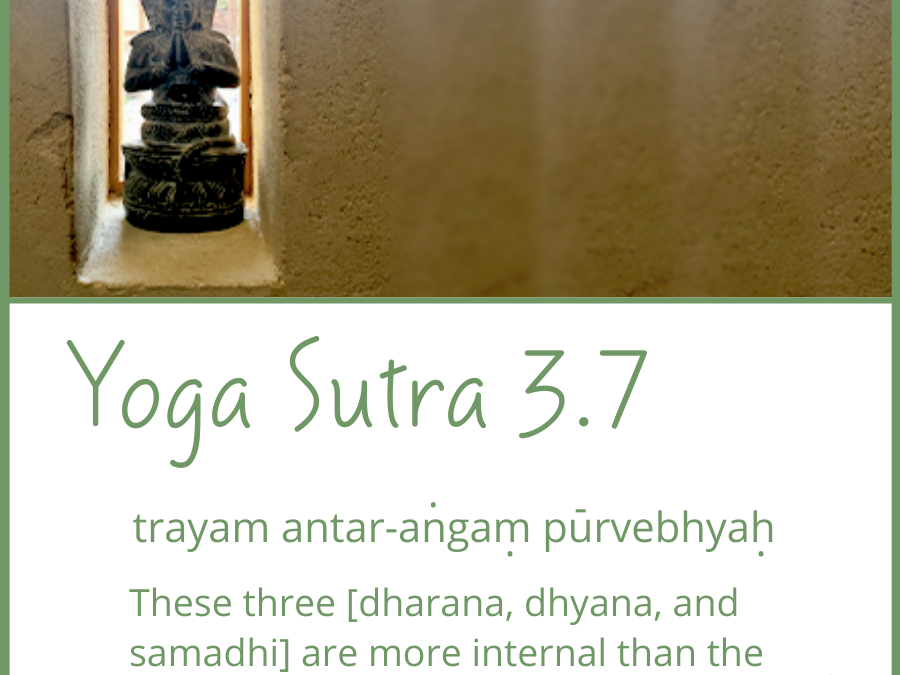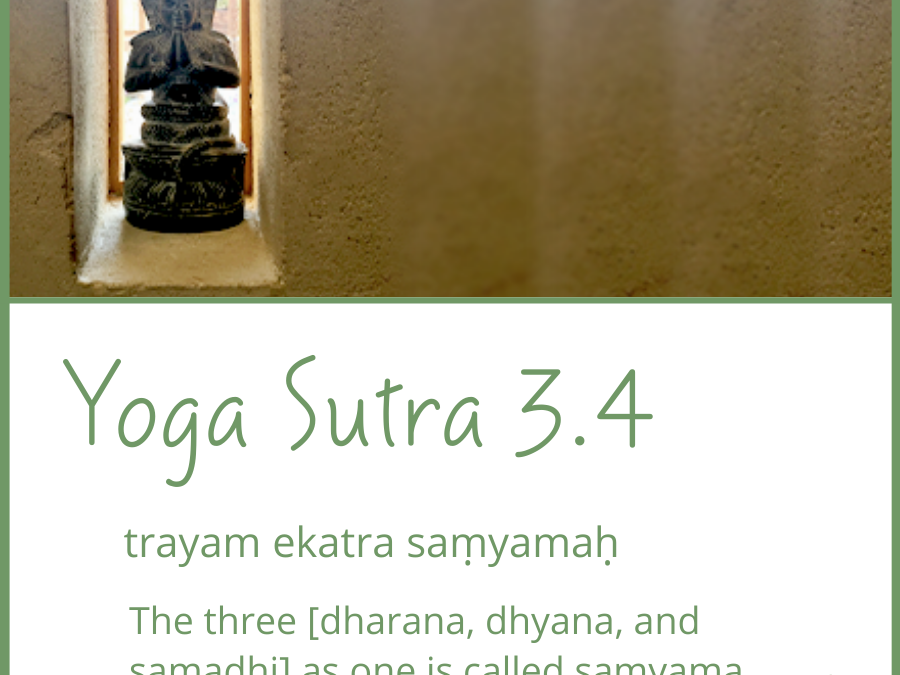by Gwen BurdickAccording to Vedic tradition, a human being spends a lifetime in four stages or ashrams. The word ashram in Sanskrit literally means "place of spiritual shelter." The framework of the four stages allows for a comfort and clarity as spirituality is...
New to Yoga
Practices
Yoga in Your Daily Life
Yoga Beyond Asana
Sister Sciences »
Our Sangha »
Yoga member - Noelle
Vastu
By Gwen Burdick Vastu, which means “science of space” in Sanskrit, is a sister science to Yoga, Jyotish and Ayurveda, and is the precursor to Feng Shui. The ancient Shastras are the books of rules of the Vedic sciences and the Vastu Shatra is the text that explains...

The Maha Mrityunjaya Mantra
The practice of the Maha Mrityunjaya mantra sends forth vibrations from body to mind to soul. It awakens the internal healing forces and Nature’s healing forces together so that we may receive the full nourishment of any discipline undertaken for well-being. Strengthening the powers of will, knowledge and action, it unblocks the flow of courage and determination.
The Four Purusharthas: Moksha
The Fourth Aim: Moksha Our investigation of the four Purusharthas, or aims of life in the Vedic tradition, concludes with Moksha, which means release, liberation or self-realization. The harmonious interactions of the first three aims, Dharma, Artha and Kama, are the...
The Four Purusharthas: Artha
The Second Aim: Artha The second Purushartha or aim of human existence as described in the Vedic texts is Artha, which means "wealth," "means" or "goal" in Sanskrit. Artha is kept in check by Dharma. The Purursharthas are not to be considered in a stand-alone fashion....
The Four Purusharthas: Dharma
The First Aim: Dharma The regulating moral principles of the Universe are described in the ancient Vedic texts to be the four Purusharthas, ususally translated as "aims of human existence." Specifically, they are defined as Dharma (duty), Artha (wealth), Kama...
February Yogis of the Month
Miguel and Nicole Dotres The Yoga Sanctuary: Can you tell us a little about yourselves? Miguel and Nicole Dotres: We have been married for 15 years and have 2 children. We moved to Punta Gorda from Miami 3 years ago in an effort to find a great place to raise our...
Sankalpa and the Power of Mars
By Gwen Burdick In Yogic philosophy, when the intention of the heart and intention of the mind merge with resolve and determination in search of Truth, we have what is called Sankalpa in Sanskrit, or solemn vow. “Kalpa” means vow and “san” means truth. It refers to...

The Transformative Value of Fire Ceremony
For centuries, fires have been used by ancient and native cultures around the world to create ceremonies. Fire, or Agni in Sanskrit, is a transformational force of purification and creation, and indigenous cultures have been infusing this sacred element with prayers, reverence, and intention as a means to connect with the Divine. Specifically in the Peruvian tradition, fire ceremonies have been used throughout the ages as a means of ritual, celebration and connection with the Universe because of their potent form of prayer.

The Vedic Fire Ceremony
Fire, or Agni in Sanskrit, is one of the five basic elements of creation. It dominates the Pitta dosha of Ayurveda. In its highest expression, Agni is the source of self-discipline, purification and transformation.
The Myth of RAHU and KETU: the Lunar Nodes
In Vedic Astrology, Rahu and Ketu are the important Lunar Nodes. Unlike the seven visible planets, Grahas in Sanskrit, they are massless yet potent mathematical points in space, sometimes referred to as the shadow planets. Our solar system is structured such that it...
Sister Sciences: Ayurveda and Jyotish
The purpose of the Vedic sciences is to promote Self-realization, and the spiritual disciplines of Ayurveda and Jyotish, Vedic Astrology, share their ancient roots. Ayurveda, which means knowledge of Life in Sanskrit, provides regimens to harmonize the mind/body...
Surya
"The Moonbeams are also the rays of the Sun." - the Vedas Our Sun, Surya in Sanskrit, is the 4.5 billion year old yellow dwarf star at the center of our solar system. It is an almost perfect sphere of gas (mostly Hydrogen and Helium) 860,000 miles in diameter and...
Shreem, Shreem, Shreem
The technology through which Spirit takes form as the manifest world commences with sound vibration traveling through the Akashic realm of space. The shortest possible sound in Sanskrit, the ancient language of the Vedas, is the mono-syllabic sound or Beej Mantra. The...
Meet The Yoga Sanctuary’s 2017 Teacher Training Graduates….Amy Kindred
This group of dedicated yogis decided to take their practice to the next level by participating in The Yoga Sanctuary’s Teacher Training Program. Over the next few months, we’ll be introducing you to them with short interviews followed by their “yoga story.” Each and...
Meet The Yoga Sanctuary’s 2017 Teacher Training Graduates…. Wendy Salafia
This group of dedicated yogis decided to take their practice to the next level by participating in The Yoga Sanctuary’s Teacher Training Program. Over the next few months, we’ll be introducing you to them with short interviews followed by their “yoga story.” Each and...

Exploring the Yoga Sutras of Patanjali: Sutra 3.7
Our most recent exploration of the yoga sutras ends with sutra 3.7, which states, trayam antarangam purvebhyah: These three [dharana, dhyana, and samadhi] are more internal than the preceding limbs. Following last month’s sutra, also focused on the last three...

Exploring the Yoga Sutras of Patanjali: Sutra 3.4
Yoga sutra 3.4 states: trayam ekatra samyama: The three [dharana, dhyana, and samadhi] as one is called samyama. The last three limbs of the eight limbs of yoga are considered those limbs that happen naturally, whereas the first five limbs are actively...
Meet The Yoga Sanctuary’s 2017 Teachers-in-Training…. Kristi Berg
This group of dedicated yogis decided to take their practice to the next level by participating in The Yoga Sanctuary’s Teacher Training Program. Over the next few months, we’ll be introducing you to them with short interviews followed by the “yoga story.” Each and...

Exploring the Yoga Sutras of Patanjali: Sutra 2.46
Yoga sutra 2.46 states, sthira sukham asanam: The posture for yoga meditation should be steady, stable, and comfortable. You may have heard this yoga sutra in class—at least in its English translation. The yoga postures are to be done with steadiness and ease....
